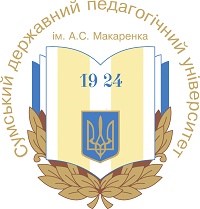ECOLOGICAL AND HYDROLOGICAL STATE OF THE KHRYNNYKIVSK RESERVOIR AND WAYS TO IMPROVE IT
DOI:
https://doi.org/10.32782/naturalspu/2025.1.13Keywords:
anthropogenic factors, water quality, erosion activity, protective strips, water protection zones, hydraulic structureAbstract
As a result of the consistent use of water resources, significant changes occur in the hydroecosphere. The created reservoir changes river ecosystems, giving them the characteristics of lakes. Excessive regulation of the water flow due to the construction of HPP cascades causes significant ecological transformations. As a result, the hydrological regime of the water flow is disturbed, the integrity of the river is lost, environmental risks of the basin arise, water quality changes, etc. These issues are becoming increasingly acute and require scientific justification, and research is becoming highly relevant. The purpose of the study was to improve the quality of surface waters and reduce the impact of anthropogenic load on the Styr River basin, which will allow stabilizing the hydrological regime and its ecological state. The study used methods of analysis and synthesis, hydrological analogy, mathematical statistics, cartography, GIS technologies and comparative assessment of landscape and ecological characteristics. The ecological situation of the Khrinnyky Reservoir ecosystem was studied, including a general analysis of its characteristics, erosion activity of the reservoir banks, environmental risks in the basin and hazards associated with hydrological parameters. It was established that over the past decades the reservoir has undergone significant ecological changes. The creation of the reservoir has disrupted the geomorphological balance and activated a number of geomorphological risks. Excessive regulation of water flow due to the construction of cascades of hydroelectric power plants has caused significant ecological changes in water quality. As a result, the hydrological regime of the flow is disrupted, the integrity of the Styr River is lost, and its division into separate ecosystems is formed. In the modern environment, water quality depends not on natural processes, but on human intervention in ecosystems. Pollution by wastewater from municipal and agricultural enterprises remains especially dangerous. In addition to water pollution, an urgent problem that needs to be solved is the modern land use structure in the reservoir basin, since excessive agricultural development has significantly reduced the area of natural lands. Based on the analysis of the environmental problems of the Khrinnyky Reservoir basin, it is necessary to establish water protection zones and protective strips along all banks of the reservoir and carry out engineering and biotechnical measures in these territories.
References
Водний фонд України: штучні водойми–водосховища і ставки: довідник /за ред. В.К. Хільчевського, В.В. Гребеня. К.: Інтерпрес, 2016, 164 с.
Вишневський В.І. Річки і водойми України. Стан і використання: Монографія. Київ, 2000. 376 с.
Гопчак І. В. Екологічна оцінка якості поверхневих вод Хрінниківського водосховища. Вісник Національного університету водного господарства та природокористування. 2019, № 47 (Ч. 1), С. 9–15.
Козак Д.Н. Дослідження на Хрінниківському водоймищі. Археологічні дослідження в Україні 2015. Луцьк : Волинські старожитності, 2016, С. 404–407.
Кучерява І.М. Відновлювальна енергетика в світі та Україні, станом на 2019 р. – початок 2020 р. № 1. Київ. 2020. С. 38–44.
Мольчак Я.О., Мисковець І.Я., Горбач Л.І. Перспективи формування ефективної еколого–економічної системи водокористування. Часопис соціально-економічної географії. 2021. Вип. 30. С. 95–103.
Поверхневі води Волині: кол. моногр./Я.О. Мольчак, І.Я. Мисковець, А.М. Вох [та ін.], (за редакцією Мольчака Я.О.), Луцьк: видавництво «Терен». 2019, 344 с.
Хрінниківське водосховище. Режим доступу: https://uk.wikipedia.org/wiki.
Fedorovsky A.D., Suhanov K.Yu., Yakimchuk V.G. The estimation of ecological condition of natural water systems with use of system approach / International Archives of Photogrammetry and Remote Sensung. Vol. XXXII, Part 7, Budapest, 1998, рр. 706–707.
Hnativ R., Cherniuk V., Khirivskyi P., Kachmar N., Lopotych N. Hnativ І. ocesses of natural self–cleaning of small watercourses with increasing anthropogenic load in the Dniester River basin. Journal of Ecological Engineering. 2023. № 24(2), рр. 12–18. DOI: https://doi.org/10.12911/22998993/156914.
Khilchevskyi, V. К., Kurylo, S. М., Zabokrytska, M. R. Long-term fluctuations in the chemical composition of surface waters and climate change. Monitoring of Geological Processes and Ecological Condition of the Environ- ment : сonference Proceedings, XIV International Scientific Conference (2020) (Vol. 1, рp. 1–5). November, DOI: https://doi.org/10.3997/2214-4609. 202056003.
Mansukh S.Y., Bruce R.J. Zink exchangeability as a function of pH in citric acid - amended. Soil Science. 2003. № 5. рр. 356–367.







